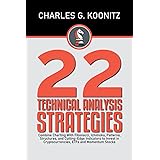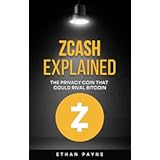Navigating the dynamic world of cryptocurrency can feel overwhelming, especially when choosing the right platform for your digital assets. Many new entrants into crypto investing often face the challenge of selecting a reliable and cost-effective exchange. However, with the right information, you can confidently identify platforms that align with your trading goals and security preferences.
The accompanying video provides an excellent overview of the top six best crypto exchanges currently available, detailing their features, fee structures, and withdrawal options. This article expands upon those insights, offering a deeper dive into each aspect and guiding you through the critical decisions involved in setting up your crypto journey. We will explore how different exchanges cater to various needs, from seamless fiat currency integration to advanced trading tools and secure Web3 wallet functionalities.
Understanding Proof of Reserves for Secure Crypto Exchanges
Trust forms the bedrock of any financial system, and the cryptocurrency space is no different. A critical factor in selecting secure crypto exchanges is their commitment to transparent financial practices. One such practice, gaining significant traction, is ‘Proof of Reserves’.
This mechanism allows exchanges to cryptographically verify that they hold all the digital assets they claim to. It’s like a bank regularly publishing an audited statement that proves they have enough cash to cover all customer deposits. While most major exchanges, including Binance, Bybit, OKX, Crypto.com, and Kraken, offer this verification, Coinbase, as a publicly listed company, relies on stringent traditional auditing processes instead. Always prioritize exchanges that provide clear evidence of their financial stability, ensuring your funds are genuinely backed by reserves.
Navigating Fiat Currency On-Ramps and Off-Ramps
Getting your traditional money (fiat) into and out of crypto can often be a major hurdle. Some users encounter frustrating messages like, “Sorry, we don’t accept your fiat currency.” Therefore, a vital consideration for any prospective user is the fiat currency support offered by a crypto exchange, which can fluctuate over time.
Exchanges like Coinbase, Crypto.com, and Kraken are generally robust for major fiat currencies, including USD, Euro, Pounds, AUD, and CAD. They serve as reliable gateways for Western markets, providing smooth transitions between fiat and crypto. In contrast, platforms such as Binance, Bybit, and OKX excel in crypto-to-crypto trading and Web3 services but may offer more limited or inconsistent fiat support. Always check the specific fiat currency options available for your region before committing to an exchange, as this can significantly impact your experience.
Deposit and Withdrawal Fees: Bank Transfers vs. Debit Cards
The cost associated with moving money is another crucial factor when evaluating crypto exchanges. While depositing funds into an exchange is often free, your bank might impose its own transfer fees. For withdrawals, exchanges might charge a small flat fee, typically one or two dollars, unless you’re using international Swift networks where fees can be considerably higher.
Bank transfers consistently remain the most economical method for deposits and withdrawals, usually involving only a flat fee. Conversely, using a debit or credit card for transactions is strongly discouraged due to exorbitant fees, which can range from 2% to 4% per transaction. Imagine paying a toll every time you enter and exit a city; those costs quickly accumulate, sometimes reaching up to 8% for moving money in and out. Opting for a direct bank transfer whenever possible can save you significant money in the long run.
Analyzing Trading Fees: Minimizing Your Transaction Costs
Once your funds are on an exchange, trading fees become your next major consideration. Cryptocurrency exchanges offer highly competitive rates, often dwarfing those found in traditional finance applications like Wise or Revolut, which can charge 0.5% to over 1% per transaction. With stablecoins, you can even perform international currency exchanges on these platforms at a fraction of the cost of traditional banks.
The fee structures vary, with some exchanges providing discounts for higher trading volumes or for paying fees using their native tokens. For example, Binance charges a standard 0.1% (10 basis points) per trade, but this can drop to a mere 0.075% if you pay with their BNB coin. However, be mindful that these native tokens are cryptocurrencies themselves and their value can fluctuate, potentially affecting your actual fee cost.
Understanding Spreads and Advanced Trading Platforms
Not all trading fees are transparently displayed; some platforms incorporate a ‘spread’ into their prices. A spread is the difference between the buy and sell price of an asset, which essentially acts as a hidden fee. This is common on the simpler, user-friendly versions of exchanges like the basic Coinbase or Crypto.com app. For instance, the standard Coinbase app might charge an effective spread of 1% to 1.5% per transaction.
To avoid these higher costs, advanced trading platforms like Coinbase Advanced, Crypto.com Exchange, and Kraken Pro are highly recommended. These ‘pro’ versions offer a more complex but transparent fee structure, often starting around 0.25% to 0.6%, depending on the platform and your trading volume. Always seek out these advanced interfaces to ensure you are getting the most competitive rates for your trades, even if it means a steeper initial learning curve.
The Power of Web3 Wallets: Self-Custody and Security
Beyond trading, modern crypto exchanges increasingly integrate Web3 wallets, offering a bridge to the decentralized internet. These wallets allow you to take ‘self-custody’ of your assets, meaning you control your private keys, not the exchange. This is akin to moving your valuables from a bank vault into your own personal, highly secure safe at home. However, self-custody comes with significant responsibility; if you lose your recovery phrase, your funds are irretrievable.
Binance and OKX stand out with particularly robust Web3 wallets integrated directly into their exchange apps. These wallets often feature multi-party computation (MPC) technology, splitting your seed phrase into multiple parts for enhanced security and recovery options. One part might be stored in the cloud, one on your device, and one by the exchange, requiring at least two parts to sign a transaction. This innovative approach makes self-custody more accessible and safer for beginners who might otherwise be intimidated by managing a single, vulnerable seed phrase.
Embracing Crypto Cards for Seamless Spending
Crypto cards represent another leap in utility, allowing you to spend your digital assets directly in everyday transactions. These prepaid Visa or Mastercard debit cards can be loaded with Bitcoin, stablecoins, or even fiat currency, bypassing the need to off-ramp funds back to a traditional bank account. Imagine earning cashback on your daily purchases, but instead of traditional currency, you receive Bitcoin directly into your account.
Crypto.com and Bybit currently offer some of the most compelling crypto card programs, complete with attractive cashback rewards and other perks. While Binance previously offered a card, it has since been discontinued in many regions. Coinbase’s card, while available, can have high fees for users outside the United States, especially for currency conversions. These cards transform crypto from an investment into a practical spending tool, allowing you to live directly within the digital economy without constant conversions.
The Barbell Strategy: Combining Strengths for Optimal Trading
Given the diverse strengths of different exchanges, many experienced crypto users adopt what’s known as the “barbell strategy.” This involves maintaining accounts on at least two types of exchanges: one that excels in fiat currency on/off-ramps and another that offers lower trading fees and advanced trading features. It’s like having a dedicated savings account at one bank for easy deposits and withdrawals, and a high-yield investment account at another for growth.
For example, you might use Coinbase or Kraken to deposit fiat currency, convert it to a stablecoin like USDC, and then transfer that stablecoin to Binance or OKX for more cost-effective trading. This allows you to leverage the best of both worlds: convenient fiat access and competitive trading fees. Since most crypto exchanges charge no account or inactivity fees, having multiple accounts provides flexibility and ensures you always have the most efficient pathway for your crypto activities.







